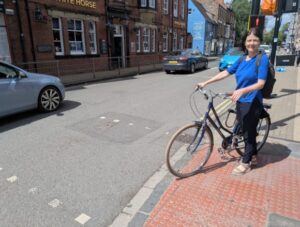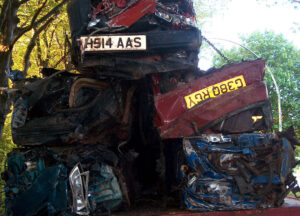MSPs have questioned the Scottish Government over the proposed timings for the implementation of low emission zones in the country — the first of which is due to come into effect from next year.
The Scottish Government has outlined plans to have four low emission zones in place to address air quality in the country by 2020, with the first to be established in Glasgow by the end of 2018. Alongside Glasgow, LEZs are also expected to be established in Edinburgh, Aberdeen and Dundee.
Scotland’s Transport Minister Humza Yousaf addressing MSPs last week (7 December)By 2023, LEZs will also be established in all air quality management areas (AQMAs) within the country.
On Thursday (7 December), the Scottish Government’s Transport Minister, Humza Yousaf offered MSPs an update on the progress being made in rolling out LEZs in the four initial cities covered by the policy.
He said: “The design and implementation of low-emission zones will be led by local councils, but we recognise that delivery of the ambitions will require partnership working across the whole of Scottish Government and a range of public bodies. We have therefore created a low-emission zones leadership group with the four largest cities and the Scottish Environment Protection Agency to support implementation of low-emission zones. That will ensure that low-emission zones are based on robust evidence, and that stakeholders and the public are engaged and involved. The group will share knowledge and identify issues where nationally consistent standards for design and delivery of low-emission zones are required.
“We are working collaboratively with Glasgow city council as part of the multidisciplinary delivery group that it has established to progress design of the low-emission zone for Glasgow. Work is under way with the City of Edinburgh council, Dundee council and Aberdeen city council to support them in developing their plans for progressing low-emission zones.
“Decisions on the location and design of low-emission zones will, as I have said, be led by local authorities. We are urging them to be ambitious in their design and scope, with all vehicles being included within the low-emission zones at the appropriate time. The design process will build on assessment of the evidence that has been developed through partnership between local councils, SEPA and Transport Scotland over the past 12 months.”
Timescale
However, the minister was quizzed by MSPs over the timescales set out for the implementation of low emission zones within Scotland. Jamie Green, the Conservative MSP for West Scotland described the aim to have a functioning low emission zone in Glasgow as ‘unrealistic’.
Glasgow city council will be the location for Scotland’s first low emission zone which will initially focus on busesResponding to the comments, the minister claimed that allowing a ‘phasing-in’ time for the initial introduction of an LEZ would likely be employed, adding that he did not expect that the measure ‘would happen from 1 January’.
He said: “I reassure the member, as much as I can, that the local authorities that the Government has spoken to understand the need for appropriate phasing and lead-in times. If we look at low-emission zones across the wider United Kingdom or, indeed, across Europe, we can see that lead-in and phasing times have been crucial, so I give the member the absolute assurance that we want to work with the business community and others to ensure that things are done similarly in Scotland.”
Pressed further on the anticipated start date of the Glasgow LEZ by the Labour MSP David Stewart, Mr Yousaf said: “There is no suggestion from the other low-emission zones that have been introduced across the United Kingdom, particularly that in London, that enforcement began from day one of their introduction. If my memory serves me correctly, the evidence that the committee received from London made a very good point about why enforcement needed a phased approach or some lead-in time. There is a sensible argument to be made in that respect.
“The flipside of that is that we must ensure that the timeline does not run away from us. We want enforceable LEZs as soon as is practicably and pragmatically possible, given the outcomes that they can achieve. Of course, a successful LEZ is one where no fines are being racked up and people are complying with the designated zone.”
















